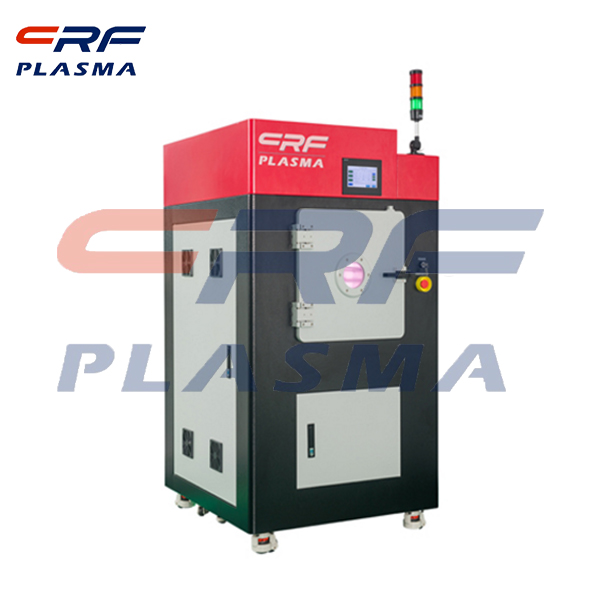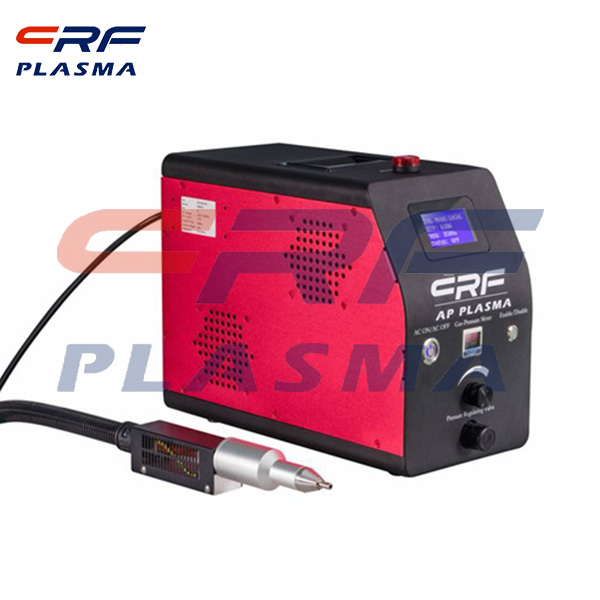
Welcome to Shenzhen Sing Fung Intelligent Manufacturing Co., Ltd.
E-mail:shaobo@sfi-crf.com
The plasma cleaning machine adds hydrophilicity to the material
- Categories:Company Dynamics
- Author:plasma cleaning machine-surface treatment equipment-CRF plasma machine-Sing Fung Intelligent Manufacturing
- Origin:
- Time of issue:2020-10-24
- Views:
(Summary description)In order to better tell you why the plasma cleaning machine can make the material surface hydrophilicity, first of all we have a general understanding of hydrophilicity, the following is some basic explanation of hydrophilicity Baidu Encyclopedia. Hydrophilic property; Hydrophilicity, in layman's terms, has a stronger affinity with water, attracts water molecules, or is easily dissolved in water. Hydrophilic definition: Molecules with polarized groups have a strong affinity for water and can attract water molecules or dissolve in water. The molecules form solid surfaces that are easily wetted by water. Having this property is the hydrophilicity of the substance. Hydrophilicity is a physical property of molecules that can form transient bonds with water through hydrogen bonds. As a result of thermodynamics, this molecule is soluble not only in water but also in other polar solutions. A hydrophilic molecule, or the hydrophilic part of a molecule, capable of polarizing it to form hydrogen bonds and making it more readily soluble in water in oil or other hydrophobic solutions. Hydrophilic and hydrophobic molecules may also be referred to as polar and non-polar molecules, respectively. Hydrophilic principle: Easy hydrogen bond with water is called hydrophilicity. Many hydrophilic groups, such as hydroxyl, carboxyl, amino, and sulfonic acid groups, readily bind to hydrogen bonds and are thus hydrophilic. From the description of the hydrophilic principle mentioned above, we can clearly see that, due to the presence of hydrophilic groups on the surface of the material, these hydrophilic groups are easy to bond with hydrogen bonds, resulting in hydrophilicity. Therefore, it is easy to explain why plasma cleaning makes the material surface hydrophilic. Principle of making materials hydrophilic by plasma cleaning machine: Plasma cleaning machine, also known as plasma surface treatment, is a new high-tech technology, using plasma to achieve conventional cleaning can not achieve the results. Plasma is a state of matter, also known as the fourth state of matter, does not belong to the commonly said solid gas liquid three states. When enough energy is applied to the gas, it dissociates and becomes a plasma. The active components of plasma include ions, electrons, atoms, activating groups, excited nuclides and photons, etc. When the reactive gas is passed into the plasma cleaning machine, complex chemical reactions can occur on the surface of the material, and new functional groups are introduced, such as hydrocarbon group, amino group, carboxyl group, etc., all of which are active groups, which can significantly improve the surface activity of the material. After being treated by gas plasma such as NH3, O2, CO, Ar, N2 and H2, ordinary materials will contact with air, and increase the surface -COOH,-C=O, -NH2, -OH, and other groups to increase their hydrophilicity. The hydrophilic principle of the plasma cleaner is simply that the active particles in the plasma react with the surface of the material to produce hydrophilic groups, thus producing hydrophilicity.
The plasma cleaning machine adds hydrophilicity to the material
(Summary description)In order to better tell you why the plasma cleaning machine can make the material surface hydrophilicity, first of all we have a general understanding of hydrophilicity, the following is some basic explanation of hydrophilicity Baidu Encyclopedia.
Hydrophilic property; Hydrophilicity, in layman's terms, has a stronger affinity with water, attracts water molecules, or is easily dissolved in water.
Hydrophilic definition:
Molecules with polarized groups have a strong affinity for water and can attract water molecules or dissolve in water. The molecules form solid surfaces that are easily wetted by water. Having this property is the hydrophilicity of the substance. Hydrophilicity is a physical property of molecules that can form transient bonds with water through hydrogen bonds. As a result of thermodynamics, this molecule is soluble not only in water but also in other polar solutions. A hydrophilic molecule, or the hydrophilic part of a molecule, capable of polarizing it to form hydrogen bonds and making it more readily soluble in water in oil or other hydrophobic solutions. Hydrophilic and hydrophobic molecules may also be referred to as polar and non-polar molecules, respectively.
Hydrophilic principle: Easy hydrogen bond with water is called hydrophilicity. Many hydrophilic groups, such as hydroxyl, carboxyl, amino, and sulfonic acid groups, readily bind to hydrogen bonds and are thus hydrophilic.
From the description of the hydrophilic principle mentioned above, we can clearly see that, due to the presence of hydrophilic groups on the surface of the material, these hydrophilic groups are easy to bond with hydrogen bonds, resulting in hydrophilicity. Therefore, it is easy to explain why plasma cleaning makes the material surface hydrophilic.
Principle of making materials hydrophilic by plasma cleaning machine:
Plasma cleaning machine, also known as plasma surface treatment, is a new high-tech technology, using plasma to achieve conventional cleaning can not achieve the results. Plasma is a state of matter, also known as the fourth state of matter, does not belong to the commonly said solid gas liquid three states. When enough energy is applied to the gas, it dissociates and becomes a plasma.
The active components of plasma include ions, electrons, atoms, activating groups, excited nuclides and photons, etc. When the reactive gas is passed into the plasma cleaning machine, complex chemical reactions can occur on the surface of the material, and new functional groups are introduced, such as hydrocarbon group, amino group, carboxyl group, etc., all of which are active groups, which can significantly improve the surface activity of the material. After being treated by gas plasma such as NH3, O2, CO, Ar, N2 and H2, ordinary materials will contact with air, and increase the surface -COOH,-C=O, -NH2, -OH, and other groups to increase their hydrophilicity.
The hydrophilic principle of the plasma cleaner is simply that the active particles in the plasma react with the surface of the material to produce hydrophilic groups, thus producing hydrophilicity.
- Categories:Company Dynamics
- Author:plasma cleaning machine-surface treatment equipment-CRF plasma machine-Sing Fung Intelligent Manufacturing
- Origin:
- Time of issue:2020-10-24 09:44
- Views:
The plasma cleaning machine adds hydrophilicity to the material:
In order to better tell you why the plasma cleaning machine can make the material surface hydrophilicity, first of all we have a general understanding of hydrophilicity, the following is some basic explanation of hydrophilicity Baidu Encyclopedia.
Hydrophilic property; Hydrophilicity, in layman's terms, has a stronger affinity with water, attracts water molecules, or is easily dissolved in water.
Hydrophilic definition:
Molecules with polarized groups have a strong affinity for water and can attract water molecules or dissolve in water. The molecules form solid surfaces that are easily wetted by water. Having this property is the hydrophilicity of the substance. Hydrophilicity is a physical property of molecules that can form transient bonds with water through hydrogen bonds. As a result of thermodynamics, this molecule is soluble not only in water but also in other polar solutions. A hydrophilic molecule, or the hydrophilic part of a molecule, capable of polarizing it to form hydrogen bonds and making it more readily soluble in water in oil or other hydrophobic solutions. Hydrophilic and hydrophobic molecules may also be referred to as polar and non-polar molecules, respectively.
Hydrophilic principle: Easy hydrogen bond with water is called hydrophilicity. Many hydrophilic groups, such as hydroxyl, carboxyl, amino, and sulfonic acid groups, readily bind to hydrogen bonds and are thus hydrophilic.
From the description of the hydrophilic principle mentioned above, we can clearly see that, due to the presence of hydrophilic groups on the surface of the material, these hydrophilic groups are easy to bond with hydrogen bonds, resulting in hydrophilicity. Therefore, it is easy to explain why plasma cleaning makes the material surface hydrophilic.
Principle of making materials hydrophilic by plasma cleaning machine:
Plasma cleaning machine, also known as plasma surface treatment, is a new high-tech technology, using plasma to achieve conventional cleaning can not achieve the results. Plasma is a state of matter, also known as the fourth state of matter, does not belong to the commonly said solid gas liquid three states. When enough energy is applied to the gas, it dissociates and becomes a plasma.
The active components of plasma include ions, electrons, atoms, activating groups, excited nuclides and photons, etc. When the reactive gas is passed into the plasma cleaning machine, complex chemical reactions can occur on the surface of the material, and new functional groups are introduced, such as hydrocarbon group, amino group, carboxyl group, etc., all of which are active groups, which can significantly improve the surface activity of the material. After being treated by gas plasma such as NH3, O2, CO, Ar, N2 and H2, ordinary materials will contact with air, and increase the surface -COOH,-C=O, -NH2, -OH, and other groups to increase their hydrophilicity.
The hydrophilic principle of the plasma cleaner is simply that the active particles in the plasma react with the surface of the material to produce hydrophilic groups, thus producing hydrophilicity.

Scan the QR code to read on your phone

TEL:0755-3367 3020 / 0755-3367 3019

E-mail:sales-sfi@sfi-crf.com

ADD:Mabao Industrial Zone, Huangpu, Baoan District, Shenzhen


















